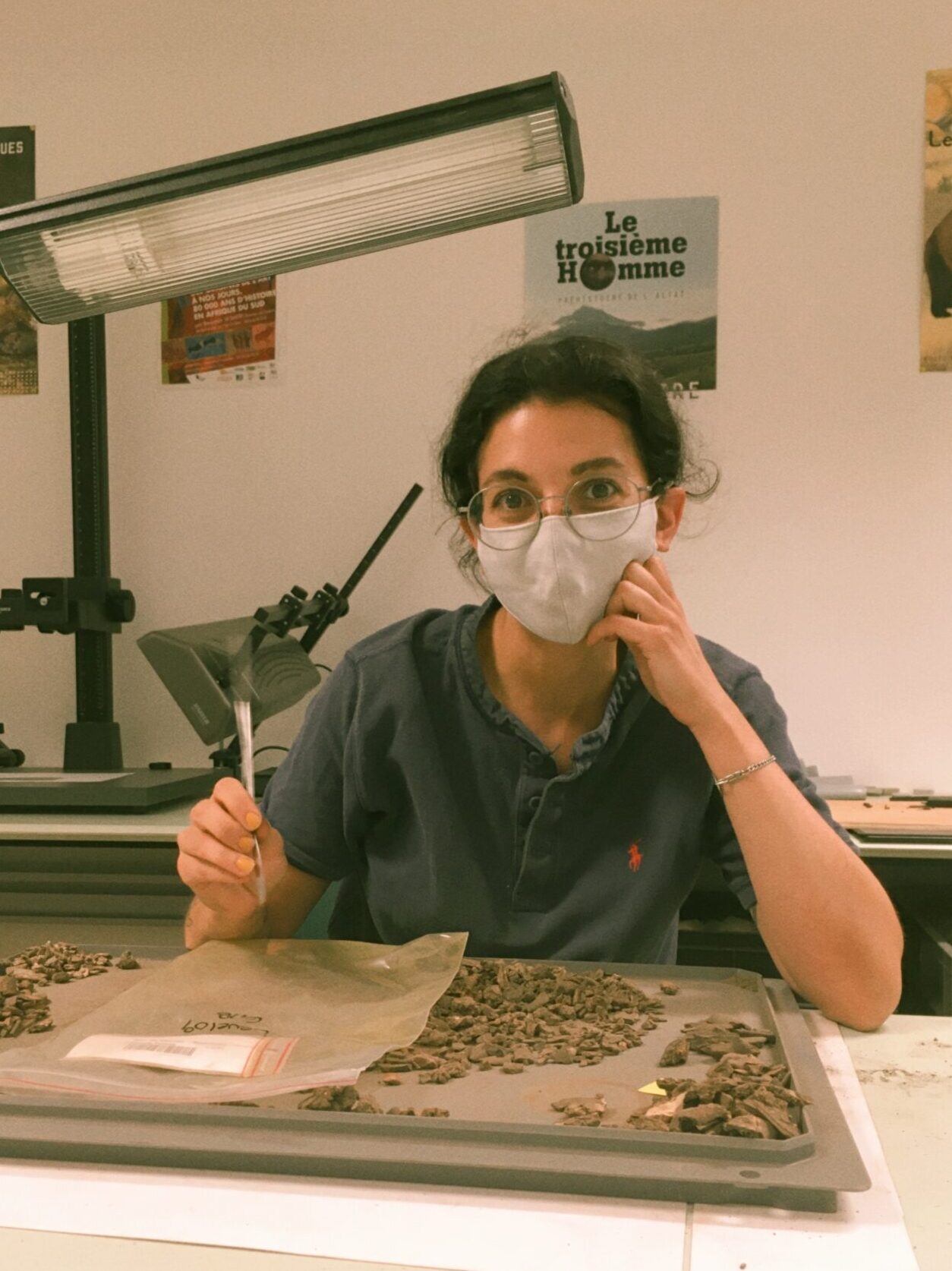
Giulia Gallo is a PhD candidate at the University of California, Davis. She received a Leakey Foundation research grant in 2020 for her project entitled “Neanderthal fire technology: A zooarchaeological perspective.”
Q: How did you become interested in prehistory?
I was always interested in the past as a child (classical archaeology & antiquity, fossils) but did not realize it was ‘science’ or could be pursued scientifically until college! I learned about prehistory for the first time in my “Introduction to Anthropology” course in college my first semester. I knew nothing of the paleolithic prior to this course, and quickly realized how many questions we still had about … everything! This filled me with so much excitement and a hunger to know more. My favorite part was that even though there were mysteries, research offered a way to narrow down the possibilities of what happened in the past–and I could be a part of that.
Q: What is your Leakey Foundation-funded research project about?
The goal of my project is to expand our knowledge of Neanderthal fire use and maintenance in the Middle Paleolithic and test hypotheses related to fire technology variability. This includes going beyond identifying simply the presence and absence of fire; I am quantifying and comparing the variability in fire event properties at two Neanderthal sites with excellent preservation through analyzing burnt bone and mapping the spatial distribution of fauna burnt to different temperatures.
Fire use and maintenance by Neanderthals is currently a large debate: Neanderthals had a large geographic and temporal range, and while fire is often associated with some Middle Paleolithic deposits, fire evidence at other Middle Paleolithic sites are suspiciously lacking- and not due to poor preservation. The time periods overlapping with noted periods of less fire use are also associated with colder, more temperate climates, and preliminary research has demonstrated that not only are there large energetic costs to making and maintaining fires, but also that the costs are higher in less forested and more open environments. This is not what researchers expected, as the assumption was that hominins like Neanderthals would have needed fire as a technology to expand and survive in more northern territories and colder continental environments. We now must ask- did all Neanderthals need or use fire? And, in instances where there is presence of Neanderthal fire use, what did their fire technology include, what were their properties, and how can we use this information to reflect on larger patterns of Neanderthal fire technology?
My project aims to address this the technological aspect of the fire question through a zooarchaeological and comparative perspective. This includes not only how hot were Neanderthal fires, how often were features reused, was fauna used as a main fuel source, but also, how variable was Neanderthal fire technology within and between sites? My data collection involves counting, weighing, and analyzing burnt and unburnt bone from piece plotted (> 2cm) and screened (< 2cm-4mm) assemblages of layer 9 at Roc de Marsal and layer 8 of Pech de l’Azé (France). I then construct spatial analyses incorporating the density and intensity of burning across the piece plotted and gross unit material. Bone fragments across burning stages (unburned, carbonized, and calcined) are then tested with spectroscopic analyses, primarily Fourier-Transform Infrared Spectrometry (FTIR), to determine burning thresholds as well as eliminate concerns of staining or bleaching that may influence how burnt bone is macroscopically interpreted. The ultimate goal will then consider the variability in fire use and maintenance through a faunal perspective both within the sites and layers of interest, but also between Middle Paleolithic sites for a consideration of a range of Neanderthal fire technology.
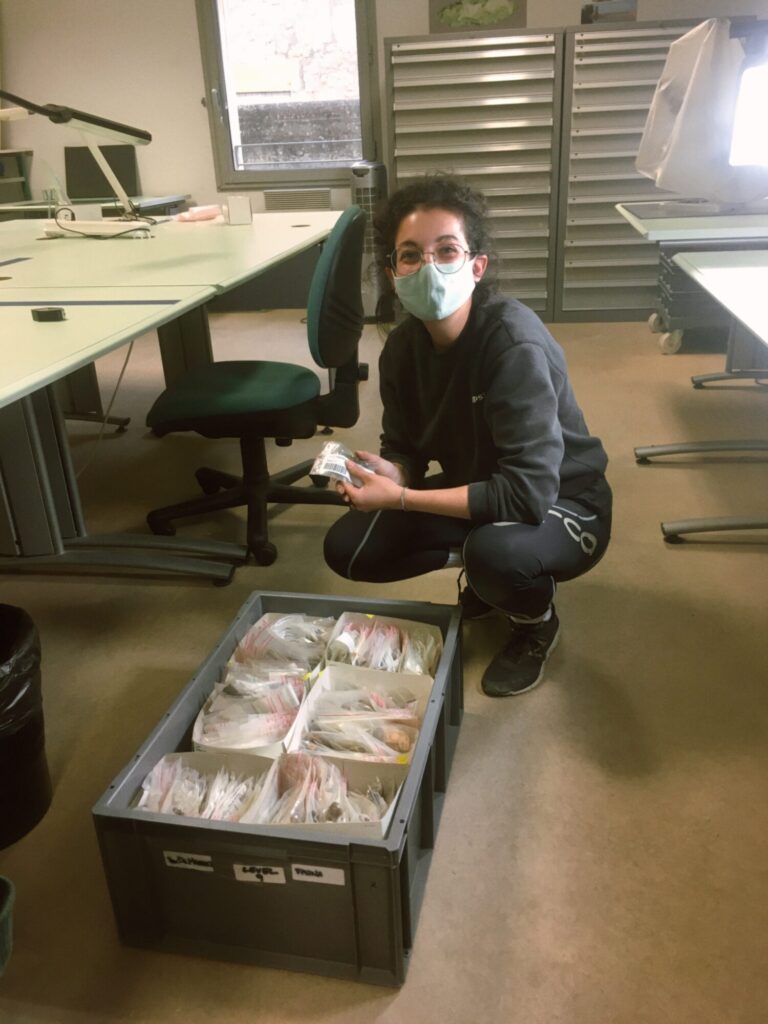
Q: How did you feel when you learned you were awarded a Leakey Foundation grant?
I was so excited to be given a chance to complete this research. It meant even more that the review came from colleagues who understood the challenges and potential of the project, and that this funding opportunity is a part of The Leakey Foundation and in line with the mission of the Foundation. I feel very lucky to have this opportunity and be in great company.
Q: What excites you about your work?
Bone is such a dynamic bio-material! Fauna can provide a wealth of detailed information when applied to investigations of heat alteration. The application of fauna to specific comparative analyses regarding Neanderthal fire use, maintenance, and variation in use and maintenance is an exciting opportunity to learn about specific strategies utilized by these hominins in regards to their fire technology. The comparative approach utilized by this project also has the potential to document larger patterns in Neanderthal fire technology. I really am excited about both levels of this project- the details of a singular fire events, and the larger patterns when considering combustion features at two roughly contemporaneous Neanderthal occupational layers. Recent studies have demonstrated that assumptions regarding Neanderthal fire use may be informed by modern human fire use, and may not be necessarily true for different populations of hominins in the past. Questions regarding obligate or habitual fire use must first understand the range of fire technology present in the past- questions this study plans to address directly. The opportunity to work with bone, to use bone to address questions related to fire use and fire technology, and the chance to work with well-preserved Neanderthal Middle Paleolithic sites is all truly so exciting for me. I also believe the method we have developed to incorporate fauna into fire studies has the potential to be applied to any archaeological combustion feature, and can continue to document properties and variation in fire technology to expand our knowledge of fire from presence/absence to detailed knowledge of the chaine operatoires of fire technology in the past.
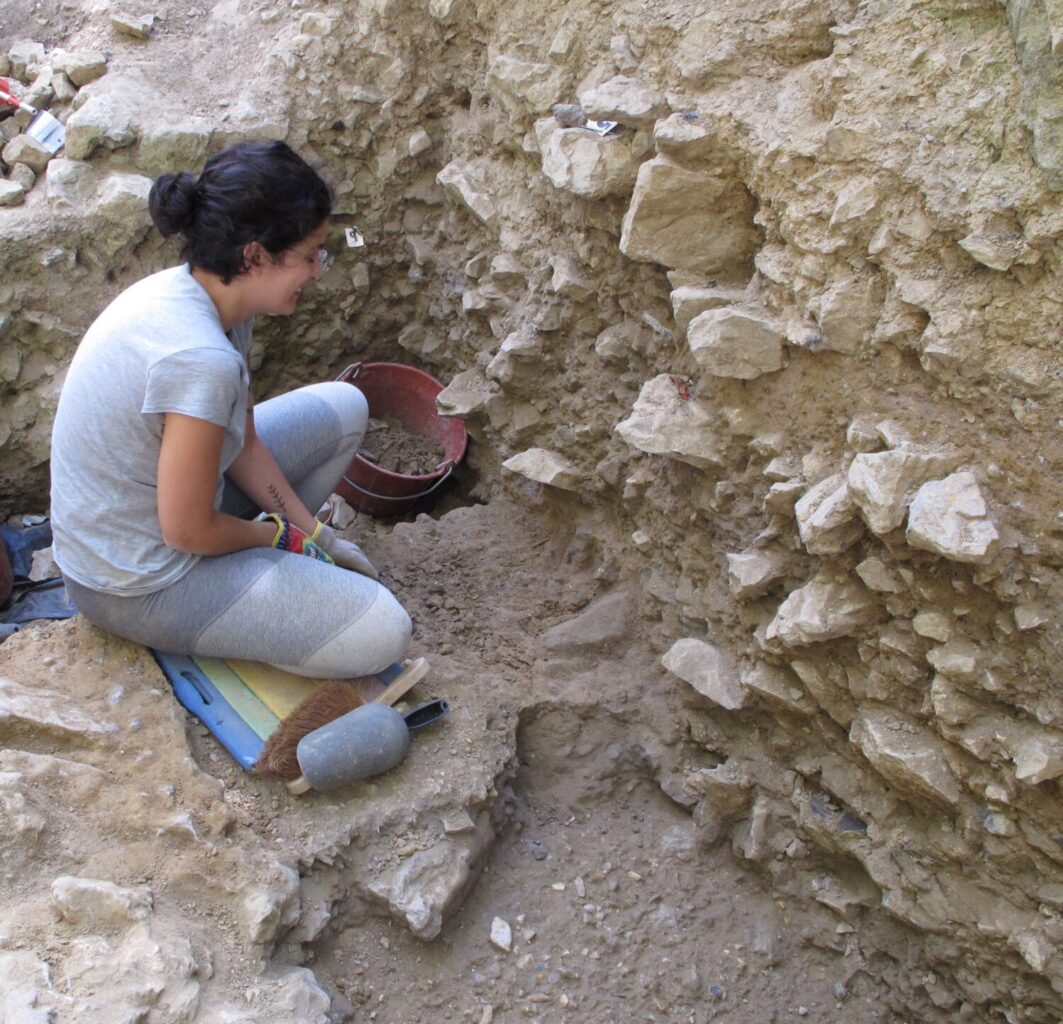
Q: What’s something interesting you’ve learned in your project so far?
The preservation at one of my sites, Roc de Marsal (layer 9) is so exceptional there are intact, identifiable burnt faunal remains! In developing my project and studying many burnt assemblages I have never seen burnt bones preserved in such quality that I could identify the fauna- usually they are highly fragmented (due to burnt bone having very low mechanical strength). This provides a novel opportunity to also document what animal species and element portions were burnt specifically!
Q: What has surprised or challenged you in the work you’re doing?
It has been challenging to incorporate fragmentary burnt bone from the screened remains into spatial analyses investigating the density and intensity of burnt bones and their relation to each other. At many archaeological sites, buckets are used as a unit of measurement, and all bones that are either not ‘found’ while excavating or are too small to be piece plotted are grouped into the bucket and later screened and sorted. While the ‘bucket’ is an archaeological standard, studies have not systematically incorporated screened fauna from those buckets into larger frameworks of spatial analyses. This is important for my study specifically, as burnt bone is often fragmentary and not large enough to be piece-plotted and have specific spatial coordinates. The solution we have found incorporates lattice frameworks for spatial analyses, with each bucket as a 3D slice of spatial information. It is my hope that this method–and published code–can be used by many zooarchaeologists interested in utilizing more information from screened material in the future!
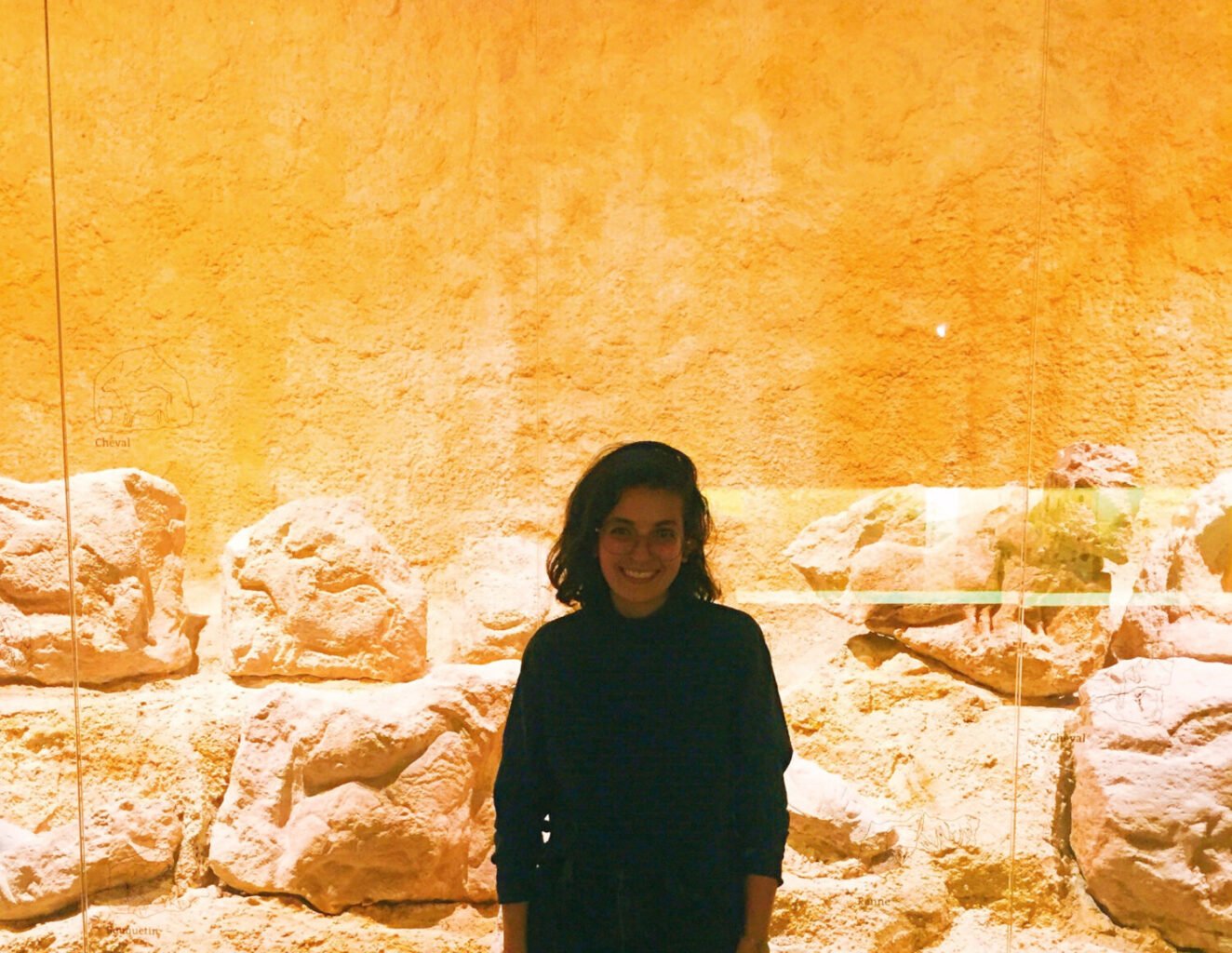
Q: Why do you think human evolution research is important?
I believe knowledge of our own evolutionary history–and the evolutionary history of our closest relatives–is so empowering. I believe research expanding our perspective and understanding of lifeways in the past is necessary for us to more fully understand what it is to be human, and the diverse ways of being human in the past. I also believe a firmer understanding of human evolution can assist with dispelling biases (explicit and implicit) and help people to fully acknowledge the dignity of diverse human lives past and present.
People *already care* about human evolution. They just do not know about human evolution, or know that their questions are evolutionary. As a generalization, our society is absolutely preoccupied with the mysteries of our own origins and existence, and look to sensationalized myths such as ancient aliens and certain dogmas that deny evolution for mystical answers. It is imperative that we not only research the truth of our incredible story, but also share research on our evolutionary history so all living populations can understand our own origins- also making us, remarkably, the only species ever to be able to do so.
Q: What’s your favorite fun fact about your field?
Oh just how incredible bone is! How much information is stored, the range of questions that a faunal assemblage can address… bone is amazing! For the study of fire specifically I think a fun fact is that based on macroscopic color and certain properties of microscopic bone mineral (bioapatite) we can determine what temperature threshold a bone was burnt at! Bone… nature’s thermometer?
Q: Is there anything else you’d like to share?
It is important for me to use this as an opportunity to thank those who have supported me in my years as a student and field researcher. I have severe anaphylactic food allergies and a chronic digestive disease (eosinophilic `gastroenteritis). Because of the life-threatening nature of my food allergies and my limited diet, I was often told I would be unable to travel, and that my presence was a liability to whomever I was working with. I am so, so fortunate to have found teams that support me, however. I would not even be in a position to apply for a grant through the Leakey Foundation if it wasn’t for their assistance every step of the way. My teams do not ostracize me or make me feel othered due to my dietary restrictions and chronic illness. They go out of their way to help me find kitchens to cook in, and grocery runs for safe food. They avoid eating nuts in shared spaces (especially without ways to wash our hands in remote areas!), and have trained on using epi-pens in case of mistakes. For a kid who couldn’t eat in elementary school cafeterias, the opportunity to pursue my dream of being an archaeologist and paleoanthropologist and travel the world is truly a future I never thought possible, and I know that it can be difficult or inconvenient at times for others. I just really appreciate their consideration, and wanted to recognize their hard work to make excavation and lab environments safe and welcoming for me to be a team member!


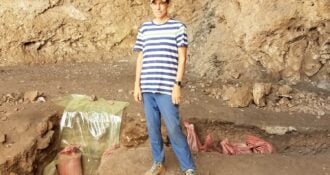
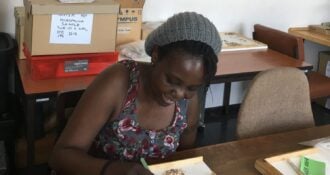
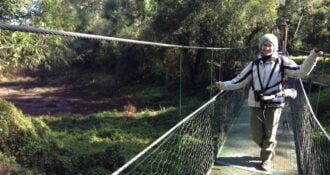

Comments 0